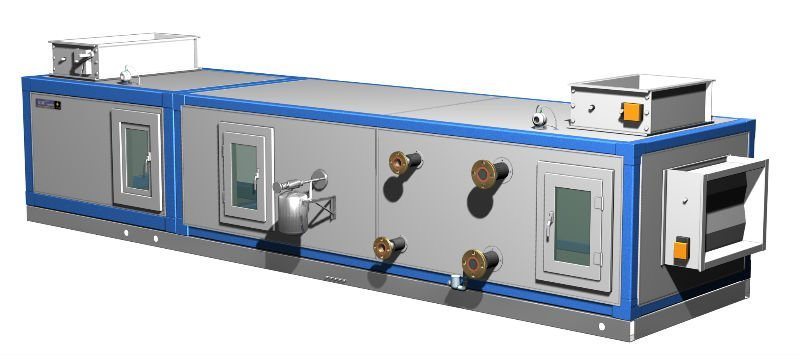The purpose of any air handling system is to prevent microbial contamination of sterile products and of clean areas, to prevent the spreading and contamination of virus, pathogenic, and spore-forming microbes used in the manufacturing of pharmaceuticals and to prevent cross-contamination of solid dosage form or bulk pharmaceuticals whose fine powder tend to spread and disperse.
What Does the CFR Say?
CFR211.46 states that:
A) Adequate ventilation shall be provided
B) Equipment for adequate control over air pressure, micro-organisms, dust, humidity, and temperature shall be provided when appropriate for the manufacture, processing, packaging, or holding of a drug product.
C) Air filtration system including pre-filters and particulate matter air filters, shall be used when appropriate on air suppliers to production areas.
In any air handling system, special attention has to be paid to keep the environment clean and to prevent the contamination of products. There are two different kinds of concepts to control the air system, one is to prevent the instruction of the surrounding air (positive air pressure control), and the other is for the contamination of air containing an undesirable substance generated in the operation area (negative air pressure control).
Air handling systems should be designed, installed, and maintained to meet these purposes.
What is the Concept of Air Handling System Validation
The degree of cleanliness of air in pharmaceutical manufacturing and related operation areas should be established depending on the characteristics of products and operations in that area. In order to establish and maintain such standards, careful attention has to be exercised to keep the standards from the stage of design and construction through to the monitoring in the stage of routine operations.
A total air handling system, covering the open air intake, treatment, the supply to the manufacturing area, and the exhaust, should be designed and validated. The handling system contains units of prefiltration, temperature and humidity control, final air filtration, return and exhaust.
When the air is supplied to the manufacture area, care is required in maintaining the required air quality during the operation or at the point of product exposure to the environment. This point is closely related to the layout and construction features of the manufacturing area.
1. The air flow from the critical or most clean area to the surrounding area: that is, the less clean area. For this purpose, rooms used for the manufacturing operations have to be laid out in according to the order of the required air cleanliness.
2. In order to maintain the air cleanliness in the area and airflow, the amount of air supplied and the exhaust have to be balanced to keep the designed air exchange ratio, airflow pattern, and air pressure differentials. In each room the operation site should be maintained in the most suitable status. For each purpose, the following items must be carefully controlled:
- Locations and number of air supplies
- Locations and number of air exhausts
- Ratio of air exchange
- Return ratio of exhaust air
- Location of local air exhaust
- Airflow pattern at the site of product exposure
- Air velocity at the point of product exposure
These features have to be well designed, installed, validated and maintained. Critical operation has to be performed unidirectional airflow (laminar airflow). Air turbulence deteriorates air quality by intake of air from the less clean areas.
The amount of air supplied and exhausted is related to the air pressure differentials. After the system is validated, air quality should be continuously monitored and maintained during manufacturing operations.
Filters used for the prefiltration and final filtration should be maintained to operate to their design specifications. Deterioration of filters is caused by integrity test and the latter is tested by the increase of air pressure differentials between the upstream and downstream sides of the filter.
Standards and Regulations
All of the environmentally-controlled areas of pharmaceutical manufacturing and its related areas should meet the requirement of air cleanliness, which is expressed as classifications specified by official standards, such as ISO (International Organisation of Standardisation) or FED-STD (U.S Federal Standard). These classifications have a close relationship with the air treatment procedures and construction features.
